David Bradshaw Photos - Vol. LXVIII (part 3) M-29 8-3/8"
Apr 8, 2015 15:56:53 GMT -5
brionic, jwp475, and 2 more like this
Post by Lee Martin on Apr 8, 2015 15:56:53 GMT -5
M-29 .44 Mag with factory "Magna" rosewood grips and Patridge sight, as it was as shot in the struggle to create a category for revolvers in silhouette separate from single shot pistols firing rifle-type cartridges.

Blue M-29 8-3/8" campaigned against single shots in production at IHMSA 1978 Internationals, an extreme uphill battle under a hard full value (9-to-3 o'clock wind) which tore across the range without letup. Load and sight data recorded on S&W wood box immediately after firing. The 80 round match was shot over two days, against the wind. As noted, 30x40 fell to the .44 on this day. During heavy gusts, wind drift for revolvers reached 7-feet on rams at 200 meters, causing many competitors to hit targets out of sequence.
David finished rams with 18-clicks left windage----with an additional one-foot hold into the wind. The pig @ 100 meters represents the windage roadmap, as it presents a far enough to get a read on wind drift, and thus to calculate downrange multiplier.
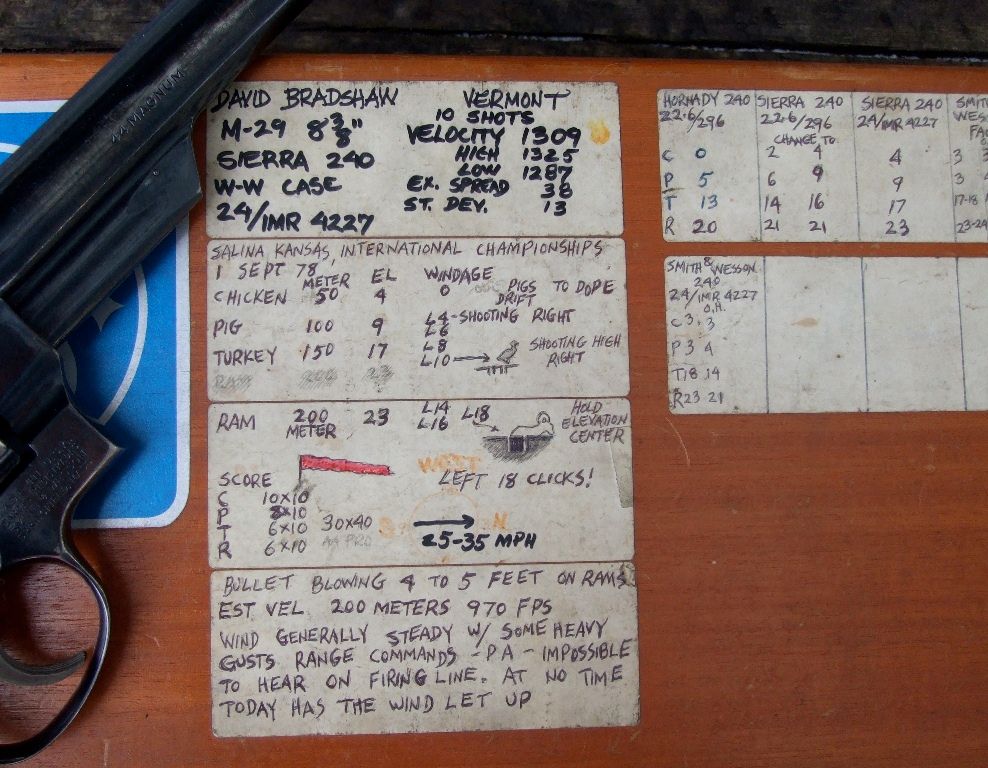
During one three month stretch, this blue 8-3/8" M-29 consumed 3,300 rounds of .44 Magnum, mostly Sierra 240 JHC seated over IMR 4227 and H4227, with a smattering of 296/H110, Winchester brass with CCI 350 primers. Not a single malfunction or glitch before, during, since. Sometime after this one-time round-count, David took the revolver to Smith & Wesson. S&W service department guru Al Plaas replaced the cylinder stop and a couple other parts. Plaas also pulled the barrel, turned the shoulder and faced the barrel to eliminate forcing cone (barrel face) erosion. During refit, Plaas eliminated cylinder and yoke endshake and cylinder sideplay. Chamber-to-bore offset measures .001 to .003", with average .002-inch.
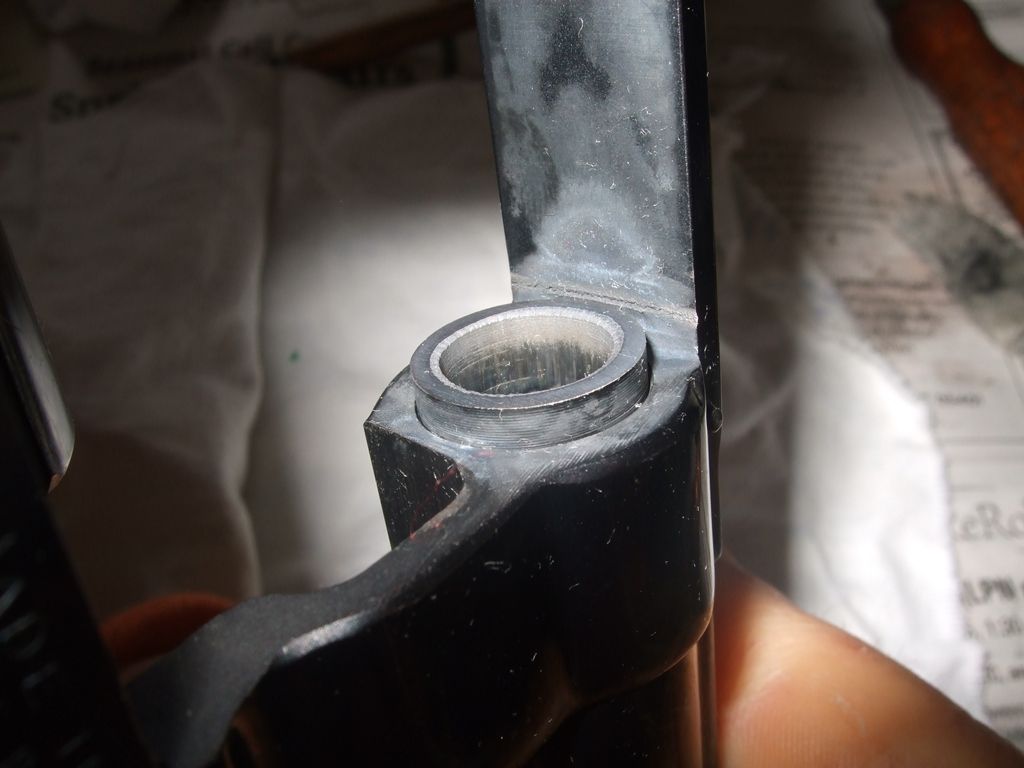
Outer gray ring indicates barrel face erosion, commonly referred to as forcing cone erosion. inner gray ring indicates actual cone erosion, a mild etching. Recent photos, well after Al Plaas set back the barrel. Note rear surface of ejector shroud, the portion of the barrel that controls yoke endshake.
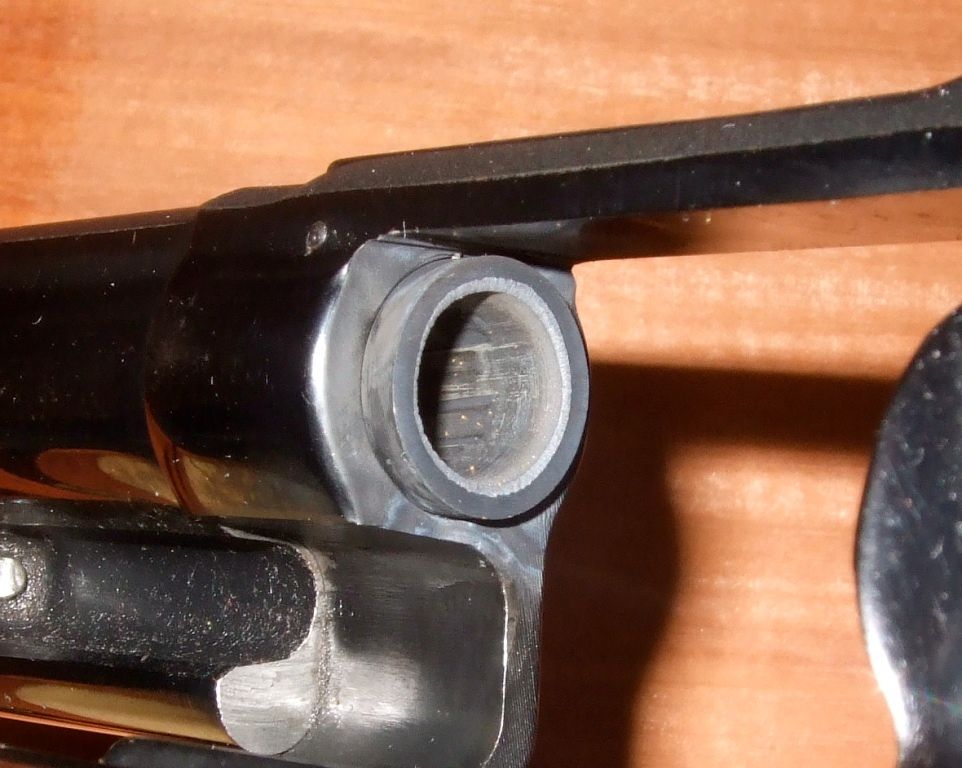
Yoke, the part which the cylinder spins on and which swings out to load and unload. Note shiny contact patch where yoke bears against barrel shroud. The yoke controls cylinder endshake. The yoke barrel may be stretched to eliminate cylinder endshake. (Colt and Ruger call this part the crane.)
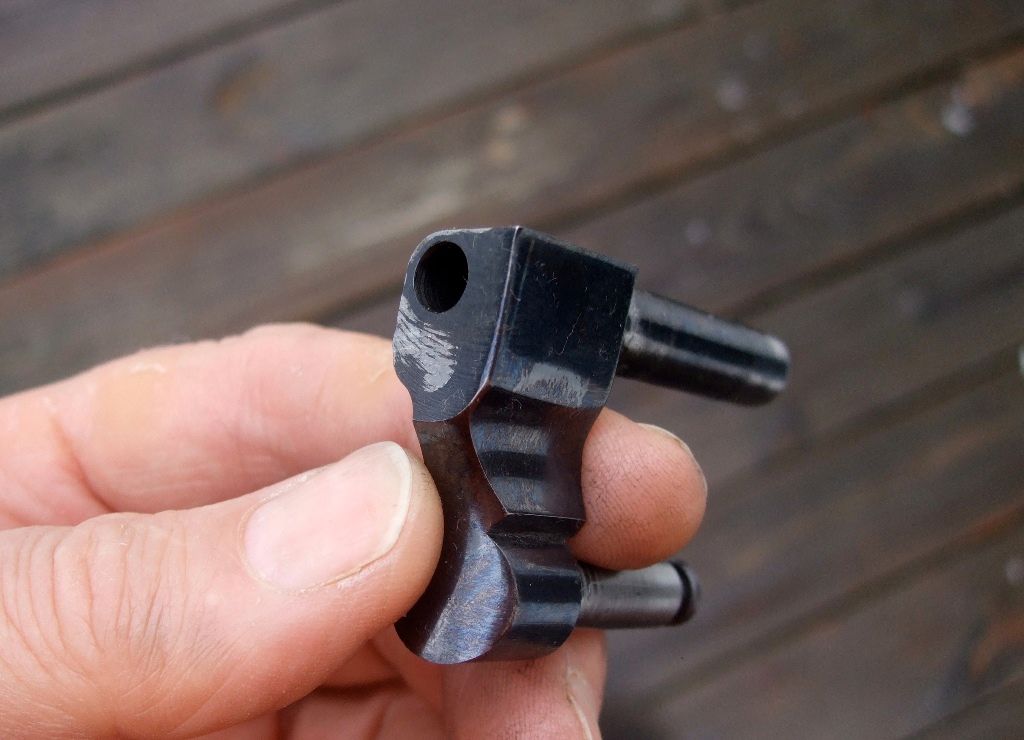
When barrel is set back, ejector rod is shortened, to not bind against spring-loaded locking bolt in shroud. Knurled end is beveled to slide over bolt as cylinder is closed. Inside of rod is lightly chamfered to insure rod centers on bolt. Chamfer also prevents bind with center pin, as front end of center pin tends to peen.
(When thumbpiece is pressed to unlock cylinder, center pin should extend slightly past ejector rod. If center pin is shorter than ejector rod, ejector rod will hang up on locking bolt. Note: a loose ejector rod will also bind against locking bolt. S&W ejector rod has left-hand thread, tightens counter-clockwise.)
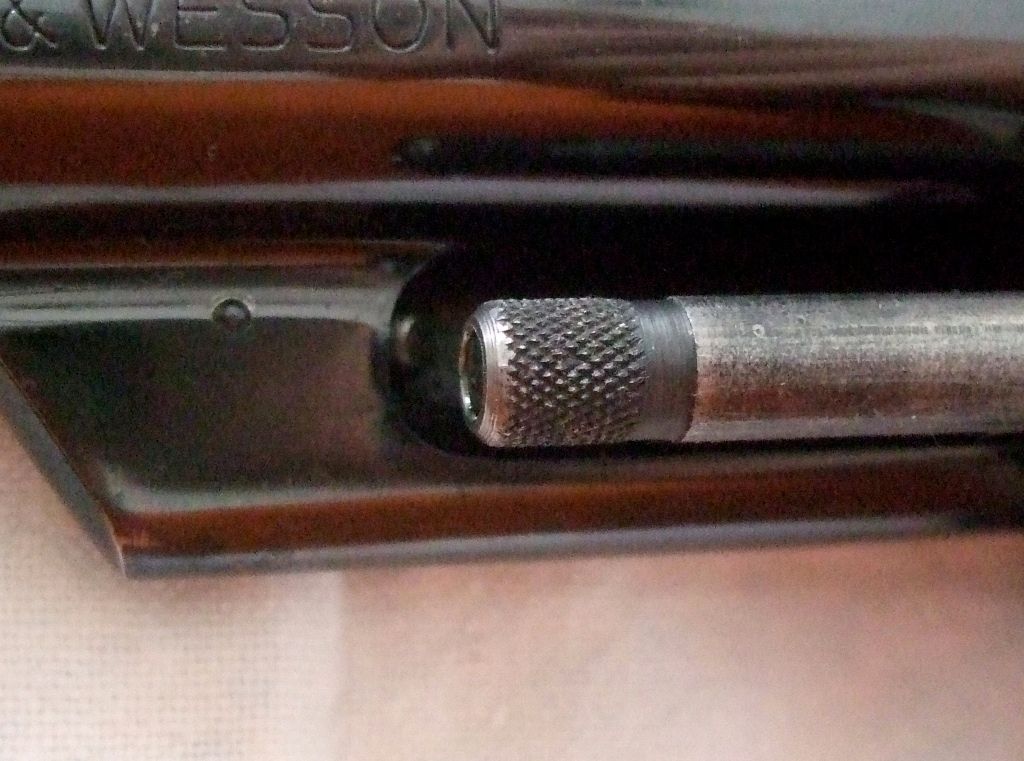
Forward sideplate screw keeps yoke from falling out when cylinder is open. To start screw, turn screw counter-clockwise until you feel a light click. Only then turn clockwise to tighten.
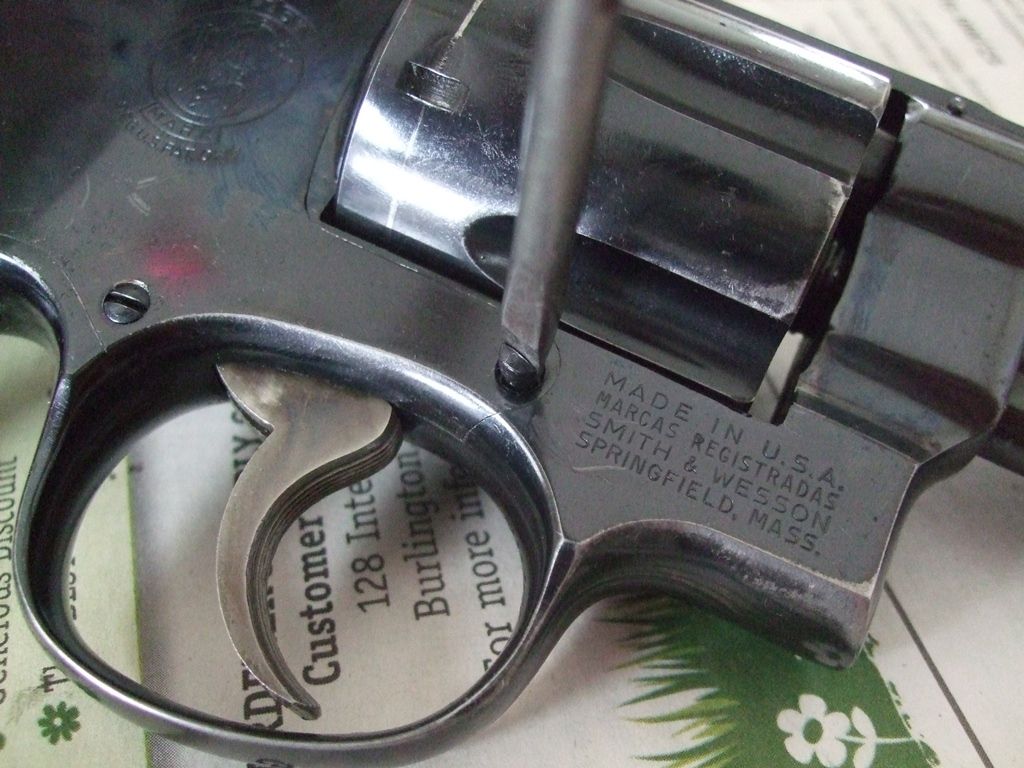
At the time S&W's Al Plaas set back the barrel to eliminate forcing cone erosion, he set the barrel/cylinder gap at .004-inch, where it remains to this day. No endshake, no sideplay, correct timing, perfect reliability.
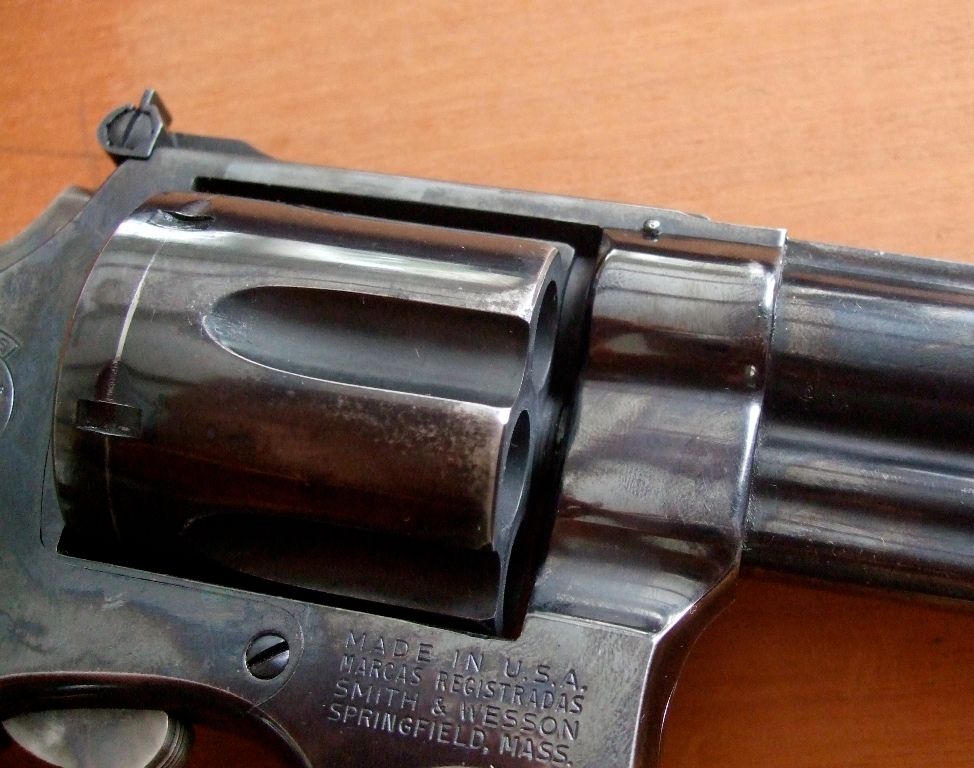
-Lee
www.singleactions.com
"Building carpal tunnel one round at a time"

Blue M-29 8-3/8" campaigned against single shots in production at IHMSA 1978 Internationals, an extreme uphill battle under a hard full value (9-to-3 o'clock wind) which tore across the range without letup. Load and sight data recorded on S&W wood box immediately after firing. The 80 round match was shot over two days, against the wind. As noted, 30x40 fell to the .44 on this day. During heavy gusts, wind drift for revolvers reached 7-feet on rams at 200 meters, causing many competitors to hit targets out of sequence.
David finished rams with 18-clicks left windage----with an additional one-foot hold into the wind. The pig @ 100 meters represents the windage roadmap, as it presents a far enough to get a read on wind drift, and thus to calculate downrange multiplier.

During one three month stretch, this blue 8-3/8" M-29 consumed 3,300 rounds of .44 Magnum, mostly Sierra 240 JHC seated over IMR 4227 and H4227, with a smattering of 296/H110, Winchester brass with CCI 350 primers. Not a single malfunction or glitch before, during, since. Sometime after this one-time round-count, David took the revolver to Smith & Wesson. S&W service department guru Al Plaas replaced the cylinder stop and a couple other parts. Plaas also pulled the barrel, turned the shoulder and faced the barrel to eliminate forcing cone (barrel face) erosion. During refit, Plaas eliminated cylinder and yoke endshake and cylinder sideplay. Chamber-to-bore offset measures .001 to .003", with average .002-inch.

Outer gray ring indicates barrel face erosion, commonly referred to as forcing cone erosion. inner gray ring indicates actual cone erosion, a mild etching. Recent photos, well after Al Plaas set back the barrel. Note rear surface of ejector shroud, the portion of the barrel that controls yoke endshake.

Yoke, the part which the cylinder spins on and which swings out to load and unload. Note shiny contact patch where yoke bears against barrel shroud. The yoke controls cylinder endshake. The yoke barrel may be stretched to eliminate cylinder endshake. (Colt and Ruger call this part the crane.)

When barrel is set back, ejector rod is shortened, to not bind against spring-loaded locking bolt in shroud. Knurled end is beveled to slide over bolt as cylinder is closed. Inside of rod is lightly chamfered to insure rod centers on bolt. Chamfer also prevents bind with center pin, as front end of center pin tends to peen.
(When thumbpiece is pressed to unlock cylinder, center pin should extend slightly past ejector rod. If center pin is shorter than ejector rod, ejector rod will hang up on locking bolt. Note: a loose ejector rod will also bind against locking bolt. S&W ejector rod has left-hand thread, tightens counter-clockwise.)

Forward sideplate screw keeps yoke from falling out when cylinder is open. To start screw, turn screw counter-clockwise until you feel a light click. Only then turn clockwise to tighten.

At the time S&W's Al Plaas set back the barrel to eliminate forcing cone erosion, he set the barrel/cylinder gap at .004-inch, where it remains to this day. No endshake, no sideplay, correct timing, perfect reliability.

-Lee
www.singleactions.com
"Building carpal tunnel one round at a time"



